 |
| (Image 1) |
First, you need to know the principles and how they can be applied in the everyday classroom. The key fundamentals of brain-based learning are:
“The brain is a parallel processor, meaning it can perform several activities at once, like tasting and smelling."
Implementation: If we consider the first principle, it talks about how the brain can learn by performing
multiple tasks at once. Technology can help teachers reach this type of learning by having the students listen to the teacher teaching the lesson and using their iPad or other device to help visualize the shapes or the
problems in the lesson. This can be extremely important in a geometry class. Students need to have an explanation in words while picturing the concept in their head. The tablet would allow them to be able to check if they are visualizing it correctly and become faster at visualizing.
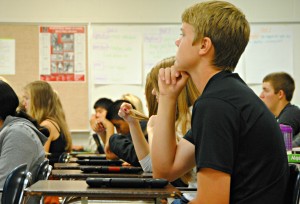 |
| (Image 2) |
problems in the lesson. This can be extremely important in a geometry class. Students need to have an explanation in words while picturing the concept in their head. The tablet would allow them to be able to check if they are visualizing it correctly and become faster at visualizing.
"Learning engages the whole physiology." (The Twelve Principles for Brain-Based Learning)
Implementation: The basis of this principle is that the whole health of the child affects their brain and therefore
 |
| (Image 3) |
"The search for meaning is innate." (The Twelve Principles for Brain-Based Learning)
Implementation: This next principle is mentioning the fact that students always search for meaning in everything. As teachers we need to create a stable and familiar environment with enriched experiences.
(The Twelve Principles for Brain-Based Learning) In my future classroom, I feel to reach this goal we need to create a routine for our students to expect everyday. A great way to accomplish this is to have a theme for everyday and also keeping the normal routine. For example, everyday we would start class with warm-up, next we would go through questions on the homework, then we would move to the lesson of the day, and last we would have an "exit ticket" that includes questions of the days lesson. During the lesson of the day we would be able to create these experiences based on the days theme. For example, I could incorporate hands on learning into the lesson by having students go outside to take measurements to find the area of shapes. A tablet can be used for the students to keep track of the measurements and to take pictures of the object that they chose to find its area.
Implementation: This next principle is mentioning the fact that students always search for meaning in everything. As teachers we need to create a stable and familiar environment with enriched experiences.
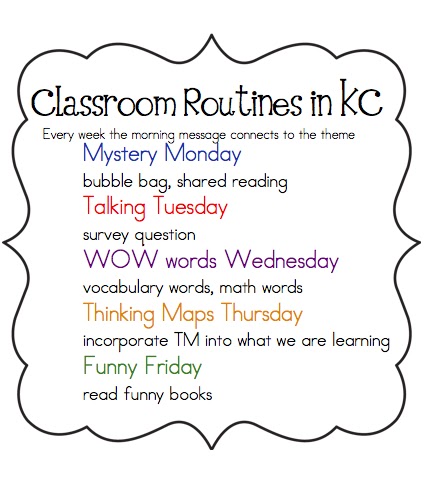 |
| (Image 4) |
"The search for meaning comes through patterning." (The Twelve Principles for Brain-Based Learning)
Implementation: Patterns are everywhere. Now why is it important in the classroom? Our brain more
 |
| (Image 5) |
"Emotions are critical to patterning." (The Twelve Principles for Brain-Based Learning)
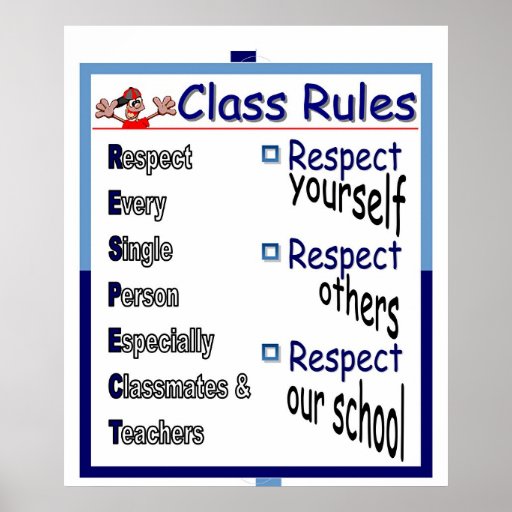 |
| (Image 6) |
"The brain processes wholes and parts simultaneously." (The Twelve Principles for Brain-Based Learning)
 |
| (Image 7) |
 |
| (Image 8) |
Implementation: The difference between focused attention and peripheral perception is that in focused attention you have the students full attention. An example of Peripheral perception is when a student is focused on a particular problem and listening to a side conversation and taking in that information as well. Students need time to
process the math concept and how the concept is implemented. Without this time, the student will not learn
at the same rate. This can be handled by breaking the lessons into smaller
units.
 |
| (Image 9) |
Implementation: I will help the student
become proficient at the math process by practicing it until they know it on an
unconscious level. Once they learn it on
an unconscious level, they will be able to complete the problems quickly and
easily (Image 9).
"We have two types of memory: spatial and rote." (The Twelve Principles for Brain-Based Learning)
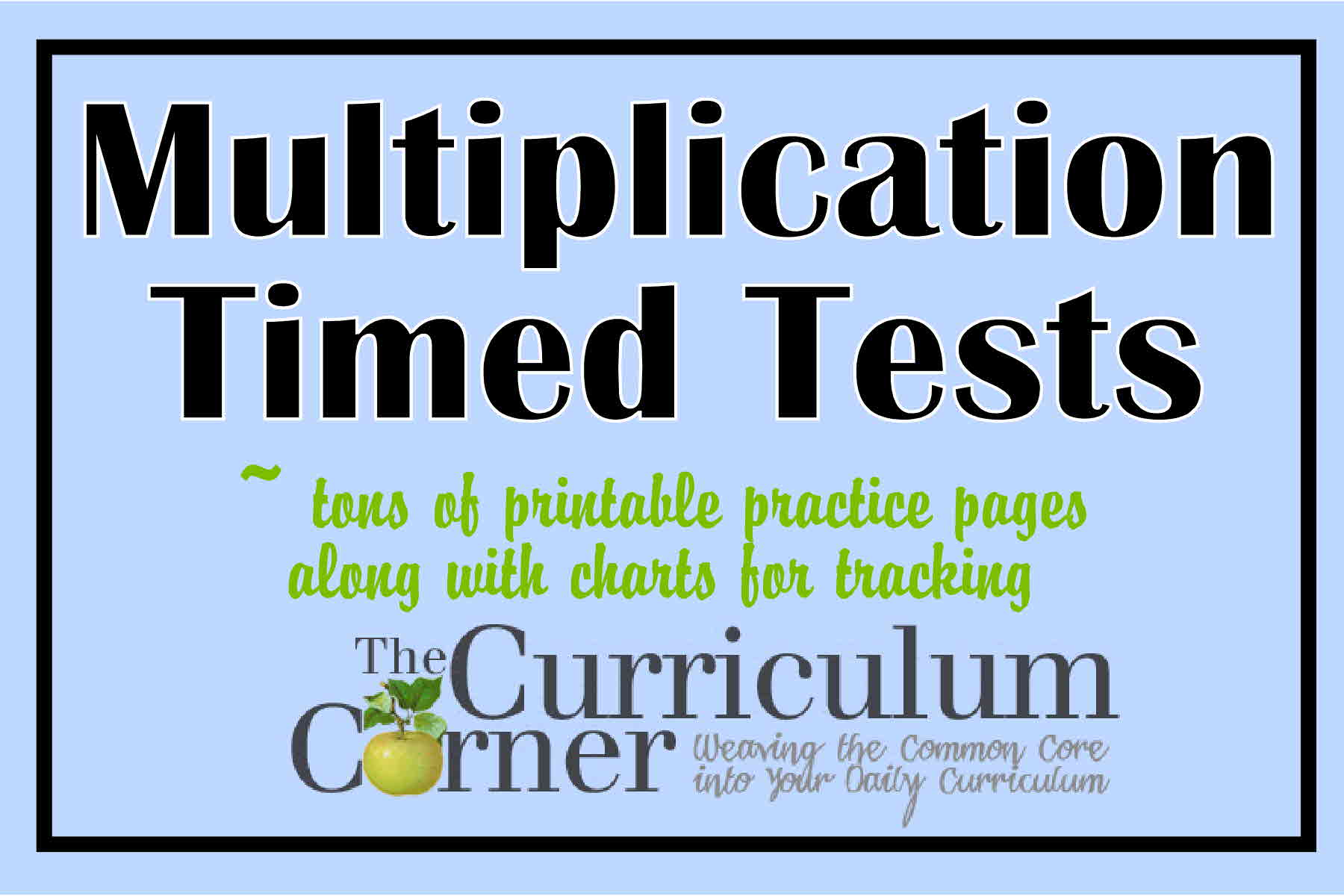 |
| (Image 10) |
Implementation: First, let's think about the definition of rote memory versus spatial memory. "Rote learning, also known as learning by repetition, is a method of learning by memorizing information." (What is Rote Learning?) "In neuroscience, spatial memory is the part of memory responsible for recording information about one's environment and its spatial orientation." (Spatial Memory) We need to learn to reach both types of memory. An idea for reaching rote memory is: A computer program can be used to create the opportunity for repetitive learning by allowing the student to practice a particular kind of math problem. This repetition allows for long-term retention of a math concept. The teacher is able to review a concept while the student creatures closure in his mind by using the summarizing and using the concept (Brain-Based Learning in Mathematics).
"We understand best when facts are embedded in natural,
spatial memory." (The Twelve Principles for Brain-Based Learning)
 |
| (Image 11) |
"Learning is enhanced by challenge and inhibited by threat." (The Twelve Principles for Brain-Based Learning)
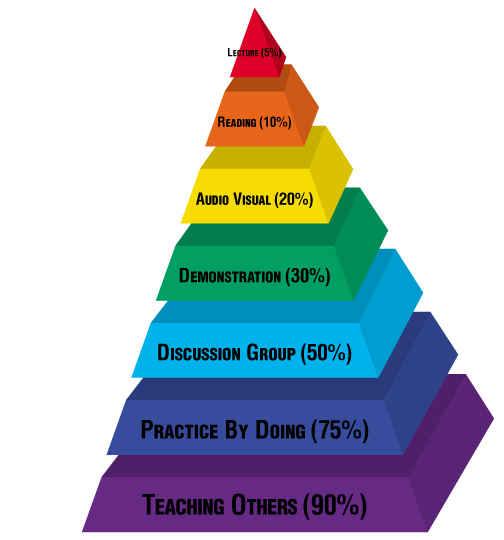 |
| (Image 13) |
"Each brain is unique.” (The Twelve Principles for Brain-Based Learning)
 |
| (Image 14) |
Implementation: Since every brain is unique, it would make sense that every student learns and understands ideas in different ways right? Well, a man named Howard Gardner sure did think so. He came up with nine intelligences that he believes will help teachers better able to reach more students. (Howard Gardner’s Theory of
Multiple Intelligences) As shown in the picture on the right, I may have students in my classroom that are not just visual learners, but may be kinesthetic learners. In order to reach these students I will need to adapt my lessons based on the types of learners in my classroom. If I had students that were kinestethic learners I would create hands on experiences in the classroom. I may do this by having students do group projects or use technology that allows students to do examples of problems on their own.
As a teacher we also need to remember that each student will have to deal with problems in their life. To make sure that my students understand this I can incorporate it into my mathematics class through this quote: "Every person is born to a unique set of circumstances, time, place, family, natural affinities, intrinsic motivations, attraction to objects, activities and people in our environments. Fifty factors in different combinations would give us a figure of 50! or 3.04140932 × 1064. The permutations and combinations of all the factors that create a human being may reach to the infinite." (Every Brain is Unique)
I will treat each student as an individual
and try to account for the differences. A woman named Jill Bolte Taylor wrote these 12 techniques after she suffered a stroke and had to reteach herself everything she used to know. I will remember that:
"1. I am not stupid. I am wounded. Please respect me.
2.
Repeat yourself. Assume I know nothing and start from the
beginning, over and over.
3.
Be patient with me the 20th time you teach me
something as you were the first.
4.
Approach me with an open heart and slow your energy down. Take
your time.
5.
Do not access my cognitive ability by how fast I can think.
6.
Cheer me on. Expect me to recover completely, even if it
takes twenty years.
7.
Break all actions down into smaller steps of action.
8.
Look for what obstacles prevent me from succeeding on a task.
9.
Clarify for me what the next level or step is so I know what I
am working toward.
10. Remember that I have to be proficient at one level of
function before I can move onto the next level
11. Focus on what I can do, rather than bemoan what I
cannot do.
12. Celebrate all of my little successes. They
inspire me." (Every Brain is Unique).
There are multiple techniques for
brain-based learning such as orchestrated immersion, relaxed alertness, and
active processing (Wilson).
A student will understand and learn more if these brain-based techniques
are utilized. A teacher can utilize
these techniques in a variety of way including those that are based in
technology. Technology can be used as a
tool to provide a mechanism for the teacher to immerse students in complicated
and interactive learning experiences, allow students to feel challenged so that
they maintain alertness, and to allow the student to create different ways of
solving the problem. In addition, the
use of technology can constantly increase the challenges to the student, maintain
alertness in the class, and allow diverse solution creation. Technology can individualizes
the curriculum and reinforces the best learning method for each student. The
student must feel that they are being enriched by the material, obtain feedback
from the instructor, and be able to visualize the material (Powell).
YouTube can be used to
create video lectures for the students to review when they have a question
while doing their homework. If a student
encounters a problem he does not understand in his homework he can play the
video link that shows the class lecture (Technology in the Classroom - US News). These links can be broken down into small
segments so that the student can listen to the one(s) that directly apply to
the problems he is completing. For
example, the student is completing a graph but does not remember how the graph
should be set up. The student will go to
the Facebook page for the class and click on the link with the YouTube lecture
video. The student will be able to
repeat the necessary information and then practice the concept while completing
his homework. This process will allow
for a greater retention by using a mix of brain-based learning techniques and
technology.
A computer based
grouping can be accomplished so that all math students can share information
and work together solving homework problems.
Facebook, twitter and Skype provide the tools a group of students need
to work together while completing homework assignments from different
locations. Students who teach math
concepts to other students will have the highest level of concept comprehension
because they have to understand how to complete the problem and how to tell
another person to complete it (Brain-Based Learning in Mathematics).
These technologies allow students to provide feedback to each other in
real time.
References:
1. (2011, 14). Funderstanding: Education, Curriculum and Learning Resources. Brain-based Learning | Learning Theory | Funderstanding: Education, Curriculum and Learning Resources. Retrieved February 21, 2014, from http://www.funderstanding.com/theory/brain-based-learning/brain-based-learning/
2. The Talking Page Literacy Organization . The Twelve Principles for Brain-Based Learning . Retrieved February 20, 2014, from http://www.talkingpage.org/artic011.html
3. Wilson, L.O. University of Wisconsin - Stevens Point. Overview of Brain-based Education. Retrieved February 20, 2014, from http://www4.uwsp.edu/education/lwilson/brain/bboverview.htm
4. Powell, S.D. (2010, 20). Education.com | An Education & Child Development Site for Parents | Parenting & Educational Resource. Brain-Based Learning | Education.com. Retrieved February 22, 2014, from http://www.education.com/reference/article/brain-based-learning/
5. (2011, 25). Pierce College. Brain-Based Learning in Mathematics. Retrieved February 22, 2014, from http://www.piercecollege.edu/departments/mathematics/Brain-Based%20Learning%20in%20Mathematics.pdf
6. U.S. News & World Report. Technology in the Classroom - US News. Retrieved February 22, 2014, from http://www.usnews.com/education/technology-in-the-classroom
7. Image1: http://farm5.staticflickr.com/4105/4998125861_eca92a2ec4_z.jpg
8. Image 2: http://bloximages.newyork1.vip.townnews.com/southernminn.com/content/tncms/assets/v3/editorial/a/0e/a0eaa927-5657-5c9b-a17f-7d95dcaa272c/522ff218934bd.preview-300.jpg
9. Image 3: http://www.thenewstribe.com/wp-content/uploads/2012/07/mental-physical-health.jpg
10. Image 4: https://blogger.googleusercontent.com/img/b/R29vZ2xl/AVvXsEj1aBCtPr5UI9YQm0xm_uHowtZe7Q-ngSpXIvc43TsyYBvBr2RkMYnYYdv6YoLsS0Wzam-op4fQq1Fny-eTT5SmsWiCRL6rWQtctubRAdLTfSgUffr4DEL13-nw3ti6BCjQGAbBjonLNJVs/s1600/classroom+routines+.tiff
11. Image 5: http://images.betterworldbooks.com/158/Physics-Formulas-Sparkcharts-9781586636630.jpg
12. Image 6: http://rlv.zcache.com/class_rules_respect_print-r2b018ac4c21145fa97359510b958ed2b_aikcp_8byvr_512.jpg
13. WiseGEEK. What Is Rote Learning?. Retrieved February 24, 2014, from http://www.wisegeek.com/what-is-rote-learning.htm
14. Dictionary, Encyclopedia and Thesaurus - WordIQ Dictionary.Spatial memory - Definition | WordIQ.com. Retrieved February 24, 2014, from http://www.wordiq.com/definition/Spatial_memory
15. Image 7: http://learningworkshop.mindedge.com/static/blog_wholepart2.jpg
16. MindEdge, Inc. | Corporate, Continuing, and Higher Education.Considering the Whole-Part-Whole learning model. Retrieved February 24, 2014, from http://www.mindedge.com/MindEdge_WPW_WhitePaper.pdf
17. Image 8: http://usablealgebra.landmark.edu/wp-content/uploads/2008/12/working-memory-2.gif
Algebra Homework Help, Algebra Solvers, Free Math Tutors.SOLUTION: Problem: A train leaves Chicago.... Retrieved February 24, 2014, from http://www.algebra.com/algebra/homework/word/travel/Travel_Word_Problems.faq.question.117126.html
18. Image 9: http://www.stevescottsite.com/stages-of-learning.jpg
19. Image 10: http://www.thecurriculumcorner.com/wp-content/uploads/2013/01/multmain.jpg
20. Image 11: http://www.whitegadget.com/attachments/pc-wallpapers/74437d1315223108-train-train-pics.jpg
21. Image 12: http://wownesia.com/wp-content/uploads/2011/04/crh3-train.jpg
22. Image 13: http://funstuffonly.com/teachdocs/Learning%20Pyramid.jpg
23. NIU - Northern Illinois University - Learning Today, Leading Tomorrow. Howard Gardner’s Theory of Multiple Intelligences.Retrieved February 24, 2014, from http://www.niu.edu/facdev/resources/guide/learning/howard_gardner_theory_multiple_intelligences.pdf
24. Image 14: http://dianaaissaigon.files.wordpress.com/2010/10/gardners-theory.jpg
25. Taylor, J.B. Exponential Education-Releasing Human Potential.Every Brain Is Unique . Retrieved February 24, 2014, from http://www.exponentialeducation.info/Every_Brain_Is_Unique.html
References:
1. (2011, 14). Funderstanding: Education, Curriculum and Learning Resources. Brain-based Learning | Learning Theory | Funderstanding: Education, Curriculum and Learning Resources. Retrieved February 21, 2014, from http://www.funderstanding.com/theory/brain-based-learning/brain-based-learning/
2. The Talking Page Literacy Organization . The Twelve Principles for Brain-Based Learning . Retrieved February 20, 2014, from http://www.talkingpage.org/artic011.html
3. Wilson, L.O. University of Wisconsin - Stevens Point. Overview of Brain-based Education. Retrieved February 20, 2014, from http://www4.uwsp.edu/education/lwilson/brain/bboverview.htm
4. Powell, S.D. (2010, 20). Education.com | An Education & Child Development Site for Parents | Parenting & Educational Resource. Brain-Based Learning | Education.com. Retrieved February 22, 2014, from http://www.education.com/reference/article/brain-based-learning/
5. (2011, 25). Pierce College. Brain-Based Learning in Mathematics. Retrieved February 22, 2014, from http://www.piercecollege.edu/departments/mathematics/Brain-Based%20Learning%20in%20Mathematics.pdf
6. U.S. News & World Report. Technology in the Classroom - US News. Retrieved February 22, 2014, from http://www.usnews.com/education/technology-in-the-classroom
7. Image1: http://farm5.staticflickr.com/4105/4998125861_eca92a2ec4_z.jpg
8. Image 2: http://bloximages.newyork1.vip.townnews.com/southernminn.com/content/tncms/assets/v3/editorial/a/0e/a0eaa927-5657-5c9b-a17f-7d95dcaa272c/522ff218934bd.preview-300.jpg
9. Image 3: http://www.thenewstribe.com/wp-content/uploads/2012/07/mental-physical-health.jpg
10. Image 4: https://blogger.googleusercontent.com/img/b/R29vZ2xl/AVvXsEj1aBCtPr5UI9YQm0xm_uHowtZe7Q-ngSpXIvc43TsyYBvBr2RkMYnYYdv6YoLsS0Wzam-op4fQq1Fny-eTT5SmsWiCRL6rWQtctubRAdLTfSgUffr4DEL13-nw3ti6BCjQGAbBjonLNJVs/s1600/classroom+routines+.tiff
11. Image 5: http://images.betterworldbooks.com/158/Physics-Formulas-Sparkcharts-9781586636630.jpg
12. Image 6: http://rlv.zcache.com/class_rules_respect_print-r2b018ac4c21145fa97359510b958ed2b_aikcp_8byvr_512.jpg
13. WiseGEEK. What Is Rote Learning?. Retrieved February 24, 2014, from http://www.wisegeek.com/what-is-rote-learning.htm
14. Dictionary, Encyclopedia and Thesaurus - WordIQ Dictionary.Spatial memory - Definition | WordIQ.com. Retrieved February 24, 2014, from http://www.wordiq.com/definition/Spatial_memory
15. Image 7: http://learningworkshop.mindedge.com/static/blog_wholepart2.jpg
16. MindEdge, Inc. | Corporate, Continuing, and Higher Education.Considering the Whole-Part-Whole learning model. Retrieved February 24, 2014, from http://www.mindedge.com/MindEdge_WPW_WhitePaper.pdf
17. Image 8: http://usablealgebra.landmark.edu/wp-content/uploads/2008/12/working-memory-2.gif
Algebra Homework Help, Algebra Solvers, Free Math Tutors.SOLUTION: Problem: A train leaves Chicago.... Retrieved February 24, 2014, from http://www.algebra.com/algebra/homework/word/travel/Travel_Word_Problems.faq.question.117126.html
18. Image 9: http://www.stevescottsite.com/stages-of-learning.jpg
19. Image 10: http://www.thecurriculumcorner.com/wp-content/uploads/2013/01/multmain.jpg
20. Image 11: http://www.whitegadget.com/attachments/pc-wallpapers/74437d1315223108-train-train-pics.jpg
21. Image 12: http://wownesia.com/wp-content/uploads/2011/04/crh3-train.jpg
22. Image 13: http://funstuffonly.com/teachdocs/Learning%20Pyramid.jpg
23. NIU - Northern Illinois University - Learning Today, Leading Tomorrow. Howard Gardner’s Theory of Multiple Intelligences.Retrieved February 24, 2014, from http://www.niu.edu/facdev/resources/guide/learning/howard_gardner_theory_multiple_intelligences.pdf
24. Image 14: http://dianaaissaigon.files.wordpress.com/2010/10/gardners-theory.jpg
25. Taylor, J.B. Exponential Education-Releasing Human Potential.Every Brain Is Unique . Retrieved February 24, 2014, from http://www.exponentialeducation.info/Every_Brain_Is_Unique.html

No comments:
Post a Comment